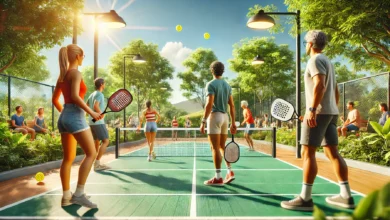Pickleball Equipment Checklist for Tournaments
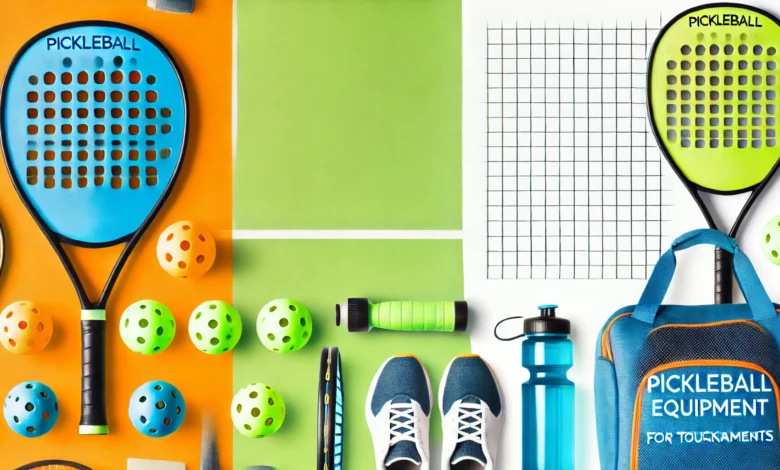
As you prepare to take your pickleball game to the next level in local and national tournaments, don’t let missing gear or last-minute hiccups hold you back. With the right equipment, you’ll be able to focus on what matters most – your performance. This guide will walk you through the necessary and optional items you should have for your next pickleball tournament, ensuring that you’re fully prepared for both comfort and performance.
Also check out: Top 10 Best Pickleball Sets with Rackets and Balls
Also check out: Top 10 Best Pickleball Sets with Net
Essential Equipment
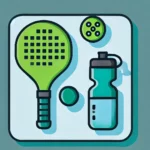
Your important equipment is the foundation of your pickleball game. It’s what gets you ready to take on the competition and perform at your best.
Paddle
Among the most important pieces of equipment you’ll need is a high-quality pickleball paddle. When identifying a paddle for tournament play, consider the material, weight, and grip. Graphite paddles are lightweight and provide control, while composite paddles offer a balance of power and touch. The weight of your paddle can also impact your game, with lighter paddles (6-8 oz) offering better control but less power, and heavier paddles providing more power but potentially causing fatigue over time.
Don’t forget to consider the grip circumference, as smaller grips provide more wrist action, aiding spin and control, while larger grips offer more stability and reduce strain on the arm. And, always carry a backup paddle in case your primary paddle breaks or becomes damaged during play. It’s also crucial to choose a paddle that suits your playing style and preferences. Experiment with different paddles to find the one that feels most comfortable and allows you to play your best game.
Pickleball Balls
On the court, the right pickleball balls can make all the difference. Pickleball tournaments typically require approved, standardized balls, which vary between indoor and outdoor play. Indoor balls have fewer holes (26-32), are lighter, and have a softer bounce, designed for slower play and better control. Outdoor balls are heavier with more holes (40), offering more durability and speed on outdoor courts. Recommended brands like the Dura Fast 40 and Onix Fuse are commonly used in tournaments, so make sure to bring plenty of balls for practice and match play.
Also, keep in mind that pickleball balls can crack or wear out during intense games, so it’s important to have a sufficient supply on hand.
Additionally, consider the specific ball requirements for the tournament you’re participating in, as some may have specific rules or regulations regarding ball usage.
Proper Footwear
Before you step onto the court, make sure you’re wearing the right shoes. Your footwear plays a big role in performance and injury prevention. Look for shoes specifically designed for pickleball or tennis, which provide lateral support and grip that regular running shoes don’t offer. Consider the court surface you’ll be playing on, as indoor shoes tend to have non-marking soles for smooth gym floors, while outdoor shoes have thicker soles with more traction for outdoor surfaces.
Break-in time is also important, so wear your shoes in practice sessions before the tournament to avoid discomfort or blisters during long matches.
Proper footwear can improve your agility and minimize the risk of slipping or twisting an ankle, giving you a competitive edge on the court.
Apparel for Tournament Play
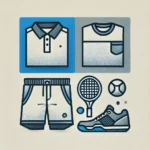
Assuming you have your crucial equipment in check, it’s time to focus on what you’ll wear during the tournament. The right apparel can make a significant difference in your comfort and performance.
Comfortable Clothing
Around every corner, there’s a chance to improve your game, and that starts with what you wear. Comfort is key in long tournament days, and clothing should allow free movement while keeping you cool and dry.
Moisture-wicking fabrics like polyester and nylon wick sweat away from your body, keeping you dry and comfortable. Avoid cotton, as it absorbs sweat and becomes heavy. Layering is also crucial for outdoor tournaments, as it allows you to adapt to changing weather conditions. In hot weather, breathable tops and shorts are ideal, while in cooler weather, consider lightweight, long-sleeved tops or athletic jackets. Don’t forget to check tournament rules in advance to avoid disqualification due to dress code violations.
Note, you’ll likely be moving around a lot during the tournament, so choose clothing that won’t restrict your movement. Look for loose-fitting clothes with a bit of stretch to ensure you can move freely and comfortably.
Sunglasses or Visor/Cap
Against the sun’s glare, you’ll need something to protect your eyes and maintain focus. Outdoor tournaments can be challenging if the sun is in your eyes, so don’t underestimate the importance of sunglasses or a visor/cap.
Polarized sunglasses reduce glare from the sun, making it easier to track the ball during bright conditions. A visor or cap provides shade and keeps sweat out of your eyes, helping you maintain focus.
Comfortable sunglasses or a visor/cap can make all the difference in your performance. Look for ones with adjustable straps or nose pieces to ensure a secure fit, even during intense matches.
Sweatbands or Wristbands
Any amount of sweat can affect your grip and vision during a match. Sweatbands or wristbands can help absorb moisture and keep sweat from dripping into your eyes or down your arm.
Headbands and wristbands help absorb moisture and keep sweat from dripping into your eyes or down your arm, which can impact your grip on the paddle. Some wristbands offer slight compression, which can help with grip and reduce wrist strain during long matches.
And don’t forget to choose sweatbands or wristbands that fit comfortably and won’t slip down during play. Look for ones made from breathable materials that will keep you cool and dry throughout the tournament.
Tournament Day Essentials
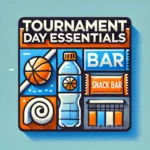
Not having the right gear on tournament day can make all the difference in your performance. Here are the importants you should bring along to ensure you’re prepared for a successful tournament.
Water Bottle or Hydration Pack
Between matches, staying hydrated is crucial. Bring an insulated water bottle that can hold enough water to last multiple matches. Look for bottles that can keep your water cool throughout the day. Alternatively, consider a hydration pack for quick access to water during matches or practice.
These hydration solutions are especially important in hot weather, where dehydration can quickly set in and affect your performance. Make sure to drink plenty of water throughout the day to stay energized and focused.
Snacks and Energy Bars
Water isn’t the only thing you need to replenish during a tournament. Having nutritious snacks on hand helps maintain energy levels and prevents fatigue. Pack snacks like fruits, protein bars, nuts, or granola bars that provide a mix of carbohydrates, proteins, and healthy fats.
Electrolyte drinks are also a great option, especially in hot weather, to help replenish the electrolytes lost through sweat. Aim for snacks that are easy to eat on the go and won’t spoil quickly.
Energy bars, in particular, are a great option for a quick energy boost. Look for bars with a balance of carbohydrates, proteins, and healthy fats to keep you fueled throughout the day.
Towel
Around every corner, you’ll find a use for a towel during a tournament. From wiping your face and hands to drying off your paddle or shoes, a small, quick-drying microfiber towel is an important item to bring along.
Understanding the importance of staying dry and fresh between matches, a towel can help you stay focused and comfortable throughout the day. Look for a compact towel that won’t take up too much space in your bag.
Accessories for Improved Performance
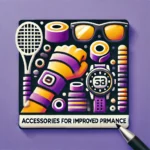
Unlike the vital equipment, accessories may not be necessary for every player, but they can significantly enhance your performance and overall tournament experience.
Grip tape, knee and elbow braces, sunblock, lip balm, and anti-chafing cream or powder are just a few examples of accessories that can make a difference in your game.
Grip Tape/Overgrips
At the heart of every pickleball player’s game is their grip. A good grip can make all the difference in control, spin, and overall performance.
Overgrips are a quick and easy way to refresh your paddle’s feel. They improve control and comfort, especially if you sweat heavily. Additionally, replacing your paddle’s grip regularly can maintain a consistent feel and prevent slippage.
It’s vital to find the right grip tape or overgrip that suits your playing style and preferences. Experiment with different types and brands to find what works best for you.
Knee and Elbow Braces
Across various sports, including pickleball, knee and elbow braces have become increasingly popular.
Many pickleball players, especially those with prior injuries or joint issues, rely on braces for added support and stability. They help prevent overextension or strain during sudden stops and starts, which can reduce the risk of injury.
It’s crucial to choose the right type of brace for your specific needs. Consult with a medical professional or do your research to find the best option for you.
Knee and elbow braces can provide an extra layer of confidence, allowing you to focus on your game without worrying about potential injuries.
Sunblock and Lip Balm
One of the most critical aspects of outdoor tournaments is protecting yourself from the sun.
Sunscreen with a high SPF is vital for preventing sunburn and skin damage. Apply it regularly, especially if you’re sweating heavily. Don’t forget to protect your lips with a lip balm that includes sunblock to prevent chapping and sun damage.
Elbow grease is not just a figure of speech; it’s also a reminder to take care of your skin during long tournament days.
Anti-Chafing Cream or Powder
Grip is vital in pickleball, but so is preventing chafing and skin irritation.
Anti-chafing creams or powders can be a lifesaver during long matches or multiple rounds in a tournament. They prevent skin irritation, especially in areas prone to friction, such as inner thighs or underarms.
Understanding the importance of anti-chafing products can make all the difference in your comfort level and overall performance.
Miscellaneous Items
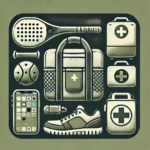
Despite the importance of your paddle, balls, and apparel, there are other necessary items to consider when preparing for a pickleball tournament.
Pickleball Bag
Between matches, you’ll need a convenient and organized way to carry your gear. A good pickleball bag can make all the difference in keeping your equipment within reach and your mind at ease. Look for a bag with separate compartments for paddles, balls, shoes, and clothing, as well as padded straps for comfort.
When choosing a bag, consider the size and weight of your gear, as well as the duration of the tournament. A bag with multiple pockets and compartments can help you stay organized and focused on your game.
First-Aid Kit
Pickleball can be a physically demanding sport, and minor injuries like blisters or scrapes are common in tournaments. A well-stocked first-aid kit can help you address these issues quickly and get back to your game.
A basic first-aid kit should include bandages, antiseptic wipes, blister pads, athletic tape, and over-the-counter pain relief medication. You may also consider adding items like ice packs or cold compresses to help with inflammation.
A first-aid kit is not just about treating injuries; it’s also about preventing them. By having the right supplies on hand, you can take proactive steps to protect yourself from common pickleball-related injuries.
Phone and Charger
Against the backdrop of a busy tournament, your phone may be necessary for staying connected with teammates, checking schedules, or receiving updates from organizers. A portable charger ensures your phone doesn’t die during the event, keeping you informed and in touch.
Due to the fast-paced nature of tournaments, it’s easy to forget to charge your phone or pack a charger. Make sure to add these items to your checklist to avoid any last-minute stress or inconvenience.
Mental and Physical Preparation Tools
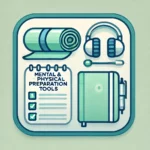
Many players overlook the importance of mental and physical preparation in their tournament checklist. However, these tools can make a significant difference in your performance and overall experience.
Warm-Up and Stretching Gear
Behind every successful player is a well-planned warm-up routine. Having the right gear can help you prepare your body for competition and reduce the risk of injury.
Invest in lightweight and portable warm-up tools like resistance bands and jump ropes. These can help with dynamic stretches and muscle activation before a match, getting your heart rate up and improving footwork. Make sure to pack them in your pickleball bag for easy access.
Notebook or Tournament Planner
Stretching beyond the physical aspect, a notebook or tournament planner can be a valuable tool in tracking your progress and improving your game.
Use your notebook to jot down details about your opponents, personal game strategies, and things to improve for future matches. This reflection can help you adjust your approach throughout the tournament, making you a more formidable opponent.
It’s important to review your notes between matches to identify patterns, strengths, and weaknesses. This will help you develop a winning strategy and stay focused on your goals.
Mental Focus Tools
Between points, games, and matches, mental focus is crucial for success in a competitive environment.
Invest in mental preparation tools like headphones for music, breathing techniques, or visualization exercises. These can help calm your nerves, boost confidence, and maintain focus before key matches.
With the right mental focus tools, you’ll be able to stay in the zone and perform at your best, even under pressure.
Court and Weather Conditions
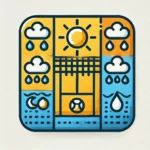
Many factors can affect your performance on the court, and understanding the conditions you’ll be playing in is crucial to your success.
Understanding Court Surfaces
For instance, the type of court surface can greatly impact your gameplay. Hard courts, such as asphalt or concrete, are faster and more unforgiving than soft courts, like clay or grass. This means you’ll need to adjust your footwork, shot placement, and overall strategy to accommodate the surface.
Furthermore, the condition of the court itself can also play a role. Cracks, unevenness, and other imperfections can affect the bounce and roll of the ball, forcing you to adapt your shots and movements accordingly.
Preparing for Different Weather Conditions
Along with the court surface, the weather can also have a significant impact on your game. Extreme temperatures, humidity, wind, and sunlight can all affect your comfort, visibility, and overall performance.
For example, playing in hot and humid conditions can lead to fatigue and dehydration, while cold weather can make your muscles stiffer and slower to react. Windy conditions can affect the trajectory of the ball, requiring you to adjust your shots and positioning.
Weather conditions can also impact your equipment and clothing choices. In hot weather, you may need to wear lighter, breathable clothing and bring extra water to stay hydrated. In cold weather, you may need to wear layers and bring a towel to keep your hands and face dry.
Personal Care and Hygiene
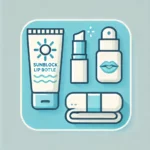
Keep your personal care and hygiene imperatives close at hand to stay comfortable and focused throughout the tournament.
Hand Sanitizer and Wipes
One of the most important personal care items to bring is hand sanitizer. With frequent handshakes and contact with equipment, germs can spread quickly. Bring a travel-sized hand sanitizer to keep your hands clean and germ-free. Additionally, consider packing antibacterial wipes to quickly clean your paddle, balls, or other equipment.
Any Personal Medications
After consulting with your doctor, be sure to pack any personal medications you may need during the tournament. This includes inhalers, insulin, or any other prescription medications. Don’t forget to bring any necessary documentation, such as prescription labels or medical IDs.
Consequently, it’s imperative to have a plan in place for managing your medications during the tournament. Consider setting reminders or enlisting a teammate to help you remember to take your medication at the correct times.
Tournament Rules and Regulations
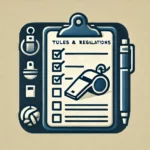
Once again, being prepared for a pickleball tournament extends beyond having the right equipment. Familiarizing yourself with the tournament rules and regulations is necessary to avoid any misunderstandings or penalties during the competition.
Familiarizing Yourself with Tournament Rules
Below are some key aspects to review before the tournament:
You should carefully read and understand the tournament rules, including formats, scoring systems, and gameplay guidelines. Make sure you’re aware of any specific rules or regulations unique to the tournament, such as dress codes, equipment restrictions, or court etiquette.
Additionally, familiarize yourself with the tournament schedule, including match timings, warm-up periods, and any breaks in between games. This will help you plan your day and ensure you’re always on time for your matches.
Understanding Scoring and Gameplay
To perform at your best, you need to have a clear understanding of the scoring system and gameplay rules:
The standard scoring system in pickleball tournaments is points-per-game, where players must win by two points. However, some tournaments may use a timed format or a best-of-series approach, so it’s necessary to confirm the scoring system beforehand.
Understand the rules regarding serves, lets, faults, and non-volley zones to avoid any confusion or disputes during the game. You should also be aware of the rules governing player conduct, including communication with opponents and line calls.
The rules may vary depending on the tournament, so take the time to review the specific regulations for your event. This will help you focus on your gameplay and strategy, rather than worrying about the rules.
Pre-Tournament Preparation
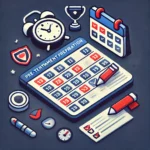
All great performances start with thorough preparation. In the days leading up to the tournament, make sure you’re doing everything possible to get your body and mind ready for competition.
Pre-Tournament Practice and Drills
Practice makes perfect, and in the days leading up to the tournament, you should focus on fine-tuning your skills. Spend time on the court practicing your serves, returns, and volleys. Work on your footwork, agility, and reaction time. Run drills that simulate game situations, such as third-shot drops and overhead smashes. The more you practice, the more comfortable you’ll feel with your paddle and the court.
Also, use this time to work on your weaknesses. Identify areas where you struggle and focus on improving those specific skills. This could be anything from perfecting your backhand to developing a more consistent serve. By addressing your weaknesses, you’ll become a more well-rounded player and a tougher opponent.
Visualizing Success and Mental Preparation
Preparation isn’t just about physical practice; it’s also about mental preparation. In the days leading up to the tournament, take time to visualize yourself succeeding. Imagine yourself winning matches, making incredible shots, and overcoming adversity. Visualize the feeling of confidence and focus that comes with being well-prepared.
Plus, use this time to develop a pre-game routine that helps you get in the right mindset. This could be anything from listening to music to doing some light stretching or meditation. Find what works for you and stick to it. By developing a consistent pre-game routine, you’ll be able to get in the right mindset and perform at your best.
Additionally, remind yourself that it’s okay to make mistakes. Everyone makes errors, even the pros. The key is to learn from those mistakes and move forward. Focus on staying positive and confident, even in the face of adversity. With the right mindset, you’ll be able to overcome obstacles and perform at your best.
During the Tournament

After you’ve arrived at the tournament venue, it’s crucial to maintain your focus and energy levels throughout the competition.
Staying Focused and Hydrated
With the adrenaline pumping and the pressure to perform, it’s easy to forget to drink water and eat nutritious snacks. Make sure to drink water regularly, especially during hot outdoor tournaments, to stay hydrated and avoid fatigue. Bring snacks like fruits, nuts, or energy bars to maintain your energy levels between matches.
Additionally, take short breaks between games to stretch, move around, and refresh your mind. This will help you stay focused and composed, even in high-pressure situations.
Managing Stress and Fatigue
Any competitive tournament can be mentally and physically demanding. It’s crucial to manage your stress and fatigue levels to perform at your best.
Take deep breaths, visualize your success, or listen to calming music to calm your nerves before key matches. During breaks, try to relax, and avoid thinking too much about the game. Instead, focus on your breathing, stretch, or engage in light physical activity to loosen up.
Hence, it’s crucial to prioritize your mental and physical well-being during the tournament. By managing your stress and fatigue levels, you’ll be able to stay focused, composed, and perform at your best when it matters most.
Post-Tournament Routine
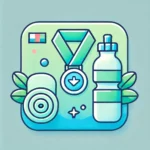
To ensure you’re fully prepared for your next pickleball tournament, it’s crucial to have a post-tournament routine in place. This routine helps you recover, reflect on your performance, and identify areas for improvement.
Cool-Down and Stretching Exercises
Below are some cool-down and stretching exercises to help your body recover after a tournament:
After a long day of play, your muscles may be sore and fatigued. A gentle cool-down, such as light cardio or yoga, can help reduce muscle tension and promote blood flow. Follow this with static stretches targeting your major muscle groups, including your legs, hips, back, and shoulders. Hold each stretch for 20-30 seconds and breathe deeply, feeling the relaxation spread through your muscles.
Additionally, consider incorporating foam rolling or self-myofascial release to further aid in muscle recovery. This can help break down adhesions and reduce muscle soreness, allowing you to bounce back faster for your next tournament.
Reviewing Performance and Identifying Areas for Improvement
About analyzing your performance, it’s crucial to reflect on your strengths and weaknesses, as well as strategies that worked or didn’t work during the tournament:
To review your performance, start by going over your match results, noting what went well and what didn’t. Identify patterns or areas where you struggled, such as serving, returning, or volleying. Be honest with yourself, and don’t be afraid to acknowledge mistakes or areas for improvement.
To take it a step further, consider watching footage of your matches or asking a teammate or coach for feedback. This can provide valuable insights into your game, helping you refine your strategies and make adjustments for future tournaments.
To identify areas for improvement, ask yourself questions like: What were my biggest challenges during the tournament? What strategies worked well, and which ones didn’t? What can I do differently in my next tournament to improve my performance? By reflecting on your performance and identifying areas for improvement, you’ll be better equipped to make adjustments and come back stronger in your next tournament.
Additional Tips and Reminders
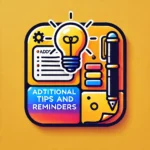
For a successful tournament experience, it’s not just about having the right equipment, but also being prepared and organized. Here are some additional tips to help you make the most of your tournament experience:
- Double-check the tournament schedule and rules to ensure you’re aware of any specific requirements or restrictions.
- Plan your travel and accommodations in advance to avoid last-minute stress.
- Make sure your equipment is in good condition and functioning properly before the tournament.
- Stay hydrated and fueled with nutritious snacks and meals throughout the tournament.
- Get plenty of rest and recovery time between matches to avoid fatigue.
Any small oversight or mistake can affect your performance, so take the time to review and prepare carefully.
Packing a Tournament Survival Kit
About a week before the tournament, start packing a survival kit with crucials like snacks, water, sunscreen, and a first-aid kit. This will ensure you have everything you need to stay energized and focused throughout the tournament.
Consider packing a small backpack or bag with easy-to-grab items like energy bars, nuts, and dried fruits. Don’t forget to include any personal medications or supplies you may need.
Staying Organized and Prepared
One of the most important things you can do to prepare for a tournament is to stay organized. This means keeping track of your schedule, opponents, and scores, as well as having a plan in place for unexpected situations.
Use a notebook or planner to keep track of your matches, opponents, and scores. This will help you stay focused and adjust your strategy as needed.
But what if you encounter unexpected issues, like a broken paddle or lost shoes? Having a backup plan in place can save you from stress and disappointment. Consider packing a spare paddle, extra shoes, or other crucial items in case of an emergency.
Summing up
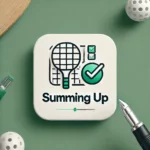
On the whole, preparing for a pickleball tournament requires more than just skill and practice – it’s about having the right equipment to support your performance. From paddles and balls to footwear and apparel, every item on this checklist plays a crucial role in ensuring you’re comfortable, focused, and ready to play your best. By tailoring this list to your own needs, you’ll be well-prepared to take on your next tournament with confidence.
If you’re new to pickleball or looking to improve your game, it’s necessary to understand what Equipment Is Needed To Play Pickleball. By investing in the right gear and taking the time to prepare, you’ll be able to focus on what matters most – your game. So, take the time to review this checklist, gather your gear, and get ready to serve up your best performance yet.
You can find Pickleball Tournaments on the Official Pickleball Website
Also check out: Top 10 Best Budget Pickleball Rackets – Cheap Pickleball Paddles
Also check out: Pickleball for Beginners: Getting Started

